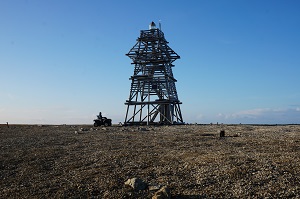Please activate JavaScript in your browser to use all interface options.
- About rosneft
- Corporate governance
-
Business
Upstream
- General Information
- Licensing
- Geological Exploration
- Reserves and resources
- Production and Development
- Gas Business
- Offshore projects
- Offshore equipment
Downstream
- General information
- Petroleum refining
- Gas Processing
- Petrochemistry
- Catalyst plants
- Production of lubricants
- Sales of oil products
- Sales of Petrochemical products and LPG
- Gas Sales
- Gas Motor Fuel Sales
-
For Investors and Shareholders
- Corporate documents
- Financial statements, presentations, annual reports
- LSE RNS disclosure
- Investor calendar
- Rosneft: Contributing to Implementation of UN Sustainable Development Goals
- ESG
- Equity
- For Insiders
- Shareholder’s Personal Account
- General shareholders' meeting
- Dividends
- Questions and answers for shareholders
- Investor tools
- Contacts
- Beware of fraud!
- Sustainable Development
- News room
Rosneft almost completely restored meteorological observation system in the Arctic region
22 October 2015
Rosneft installed automatic meteorological station on Wrangel Island having almost completely restored meteorological observation in the Arctic region under a scientific and research expedition "Chukotka-Summer-2015", implemented with the participation of specialists from the Arctic Research Center LLC and FSBI Arctic and Antarctic Scientific and Research Institute.
7 Rosneft modern meteorological stations work in the four seas of the Arctic Ocean now. Previously Company’s specialists installed meteorological stations on the Gessen, Opasniy, Ledyanoy Gavani capes and on the islands of Preobrazheniya, Zhokhova and Uyedineniya. These stations will not only optimize exploration works and improve upstream projects efficiency but will also give a start to a series of Arctic scientific and research programs. The obtained data will significantly improve weather forecasts accuracy in for the whole country.
Moreover, the Company develops a seismic activity monitoring system and installed a new seismic station under this program.
Scientists also collected important hydrometeorological and ice conditions summer data in the Chukchi Sea water area. This information is essential to evaluate environment impact on the Company license areas development. Underwater buoy stations for the analysis of the annual volatility of the morphometric and dynamic ice cover properties, sea level fluctuations, waves and currents in the Chukchi Sea license areas have been maintained and re-installed.
Expedition program also covered biological surveys, including sea mammals and birds monitoring.
"Chukotka-Summer-2015" was the tenth scientific and research expedition, organized by Rosneft to study natural, climatic and geotechnical conditions of the Russian Arctic seas. All the works have been conducted with regard to exclusive environmental and industrial safety standards.
|
Notes for editors: Rosneft owns 51 licenses for offshore oil and gas exploration and production in Russia and is the largest Russian offshore subsoil user. Recoverable reserves are estimated at over 42 bln TOE. Sedimentary basins of the Russian Arctic offshore are comparable with the largest petroleum regions of the world in terms of the cumulative oil and gas potential. |
Rosneft Information Division
October 22, 2015

-315xx70.png)

